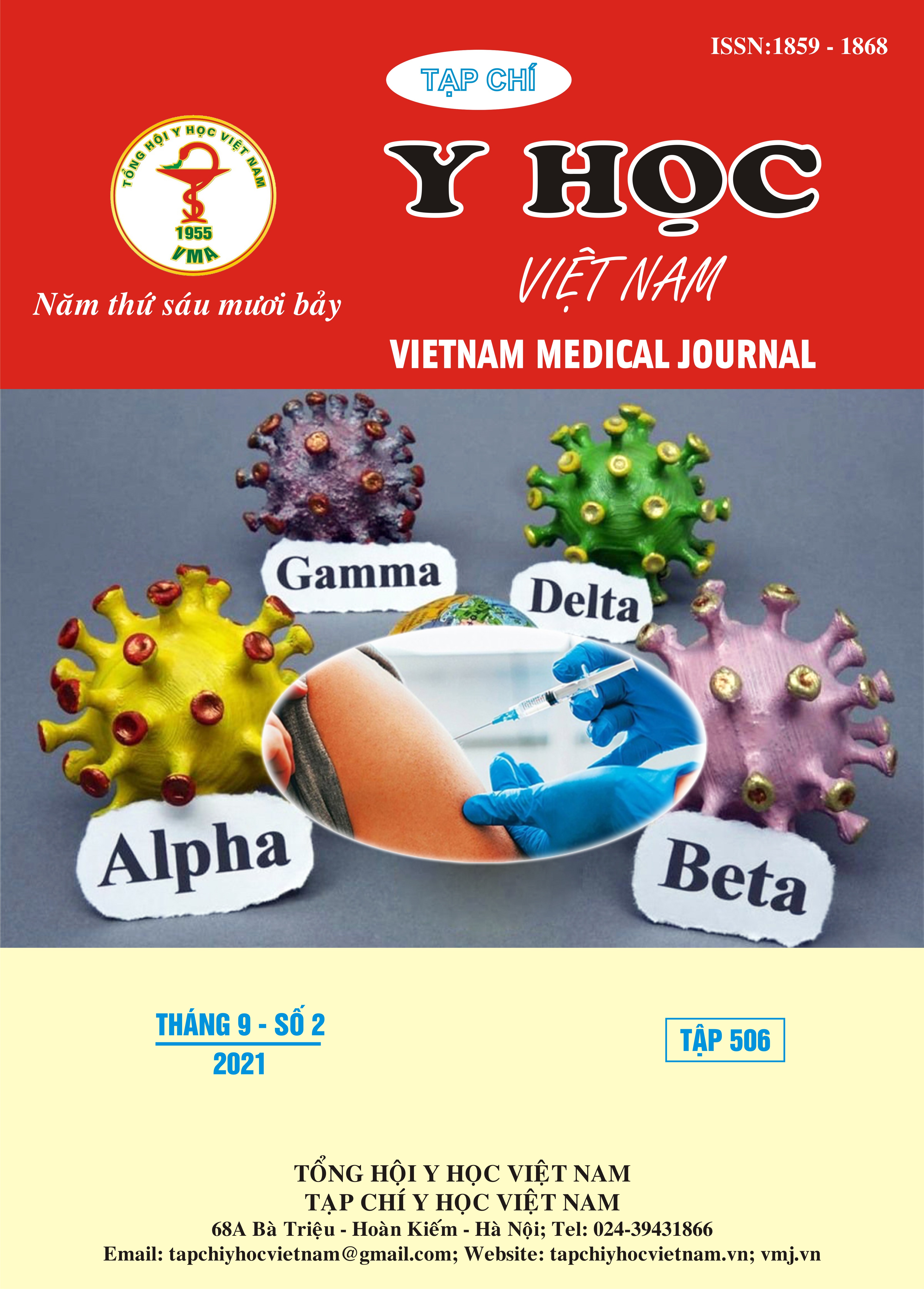CHARACTERISTICS OF HEMATOLOGICAL PARAMETERS IN PREGNANT SYSTEMIC LUPUS ERYTHEMATOSUS AT BACH MAI HOSPITAL IN THE PERIOD 2020 - 2021
Main Article Content
Abstract
Objects: Systemic lupus erythematosus (SLE) is a chronic inflammatory disease and hematological parameters have been reported to useful to assessing systemic inflammation response, disease activity as well as in predicting some organs damage and the occurrence of disease. However, pregnancy effects significantly on these indicators. Therefore, this study aims to understand the change of these indices and their relationship with disease activity during pregnancy. Materials and methods: The cross sectional study involving 82 pregnant SLE patients and the control groups include 40 nonpregnant SLE patients and 30 healthy pregnancies. Assess disease activity according to the SLEPDAI. The hematological indices are evaluated including hemoglobin concentration, platelet, neutrophil, lymphocyte count, neutrophil to lymphocyte ratio (NLR), platelet to lymphocyte ratio (PLR). Results: Relationship with disease activity during pregnancy, SLEPDAI score was correlated with hemoglobin (r = -0.609), platelet count (r = -0.280), lymphocyte (r = -0.222) and NLR (r = 0.343) but not correlated with PLR. Multivariate linear regression analysis showed that hemoglobin concentration was an independent factor affecting the SLEPDAI score (β = -0.098; p = 0.001). In pregnant lupus patients, NLR (3.96) was elevated compared with the nonpregnant lupus group (2.91) but was not different from that of healthy pregnancies (3.51). PLR (159.66) was not different from the non-pregnant lupus group (175.09) but significantly increased compared with healthy pregnancies (106.34). In the prediction of SLE during pregnancy, AUC value of NLR and PLR were 0.627 (95%CI: 0.519 - 0.735; p = 0.040) and 0.729 (95%CI: 0.627 – 0.822; p < 0.001), respectively. Conclusions: Hemoglobin, NLR and PLR may be indicators of systemic inflammation in SLE during pregnancy.
Article Details
Keywords
systemic lupus erythematosus, pregnancy
References
2. Lee, Y.H. and G.G.J.J.o.R.D. Song, Association of neutrophil to lymphocyte ratio, platelet to lymphocyte ratio, and mean platelet volume with systemic lupus erythematosus disease activity: a meta-analysis. 2017. 24(5): p. 279-286.
3. Lateef, A. and M. Petri, Managing lupus patients during pregnancy. Best Pract Res Clin Rheumatol, 2013. 27(3): p. 435-47.
4. Wu, Y., et al., Neutrophil-to-lymphocyte ratio (NLR) and platelet-to-lymphocyte ratio (PLR) were associated with disease activity in patients with systemic lupus erythematosus. 2016. 36: p. 94-99.
5. Hershko Klement, A., et al., Neutrophils to lymphocytes ratio and platelets to lymphocytes ratio in pregnancy: A population study. PLoS One, 2018. 13(5): p. e0196706.
6. Meng, X., et al., Determinant roles of gender and age on SII, PLR, NLR, LMR and MLR and their reference intervals defining in Henan, China: A posteriori and big‐data‐based. 2018. 32(2): p. e22228.
7. Yu, H., et al., Predictive value of the neutrophil-to-lymphocyte ratio and hemoglobin insystemic lupus erythematosus. Exp Ther Med, 2018. 16(2): p. 1547-1553.
8. Peirovy, A., et al., Clinical Usefulness of Hematologic Indices as Predictive Parameters for Systemic Lupus Erythematosus. Lab Med, 2020. 51(5): p. 519-528.
9. Yücel, B. and B. Ustun, Neutrophil to lymphocyte ratio, platelet to lymphocyte ratio, mean platelet volume, red cell distribution width and plateletcrit in preeclampsia. Pregnancy Hypertens, 2017. 7: p. 29-32.


